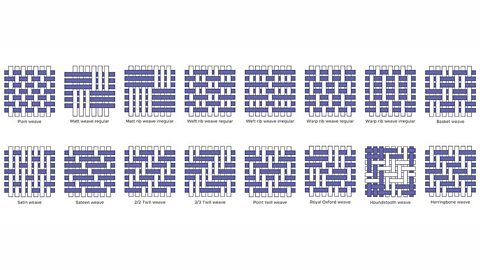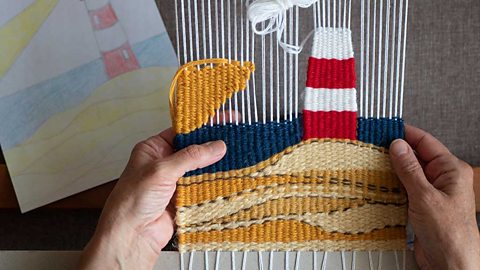Constructed textile techniques
How are fabrics made?
Fabrics can be made from natural fibres and man-made fibres. The fibres are cleaned and spun to produce threads and yarns. Different thicknesses are called ply. The threads and yarns are then used to weave or knit into fabrics. Non-woven fabrics are produced by felting or bonding fibres.
Weaving
Woven fabrics are constructed on a loomMachine for weaving threads.. warpVertical threads on a loom. threads are threaded first around the loom. These threads go up and down.
weftHorizontal threads on a loom. threads are woven under and over the warp threads using a shuttle, going from side to side.
The selvedge is at the edge of the fabric and is a strip where the weft threads come back on themselves to start the next row.
Woven fabrics are strong and they are stretchy on the biasA slanting direction across the direction of threads of a fabric..


You can produce two-tone fabrics by having a different coloured warp thread to the colour of the weft threads.
Interesting designs are created by weaving with different coloured and thicknesses of weft yarns in different sections of the warp. This makes tapestries.

Experiment weaving with different fabrics, fibres and materials as your weft.
Question
How can two-tone fabrics be woven?
You can use one colour for the threads that go up and down (warp threads) and another colour for the threads that you weave from side to side (weft threads).